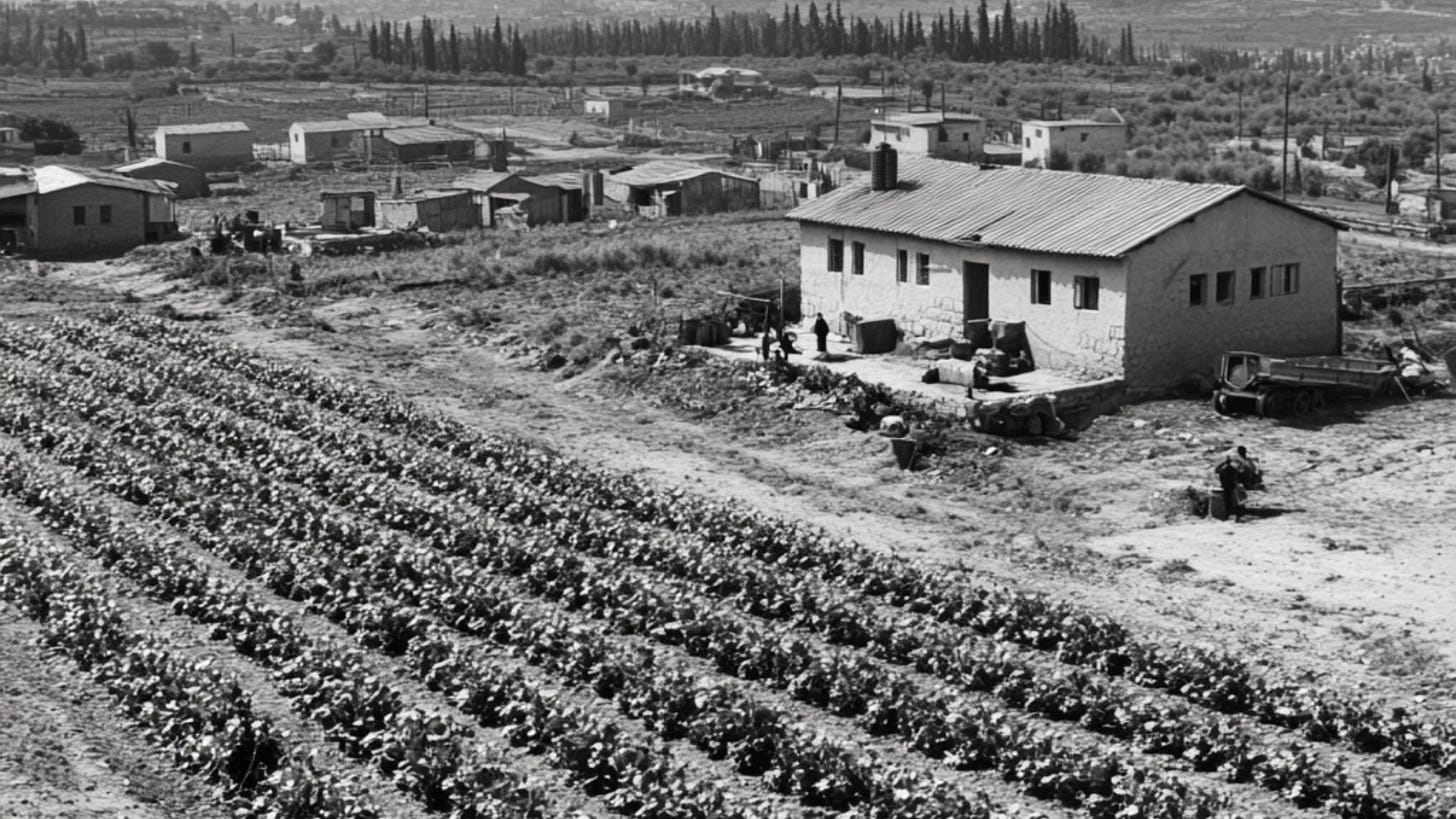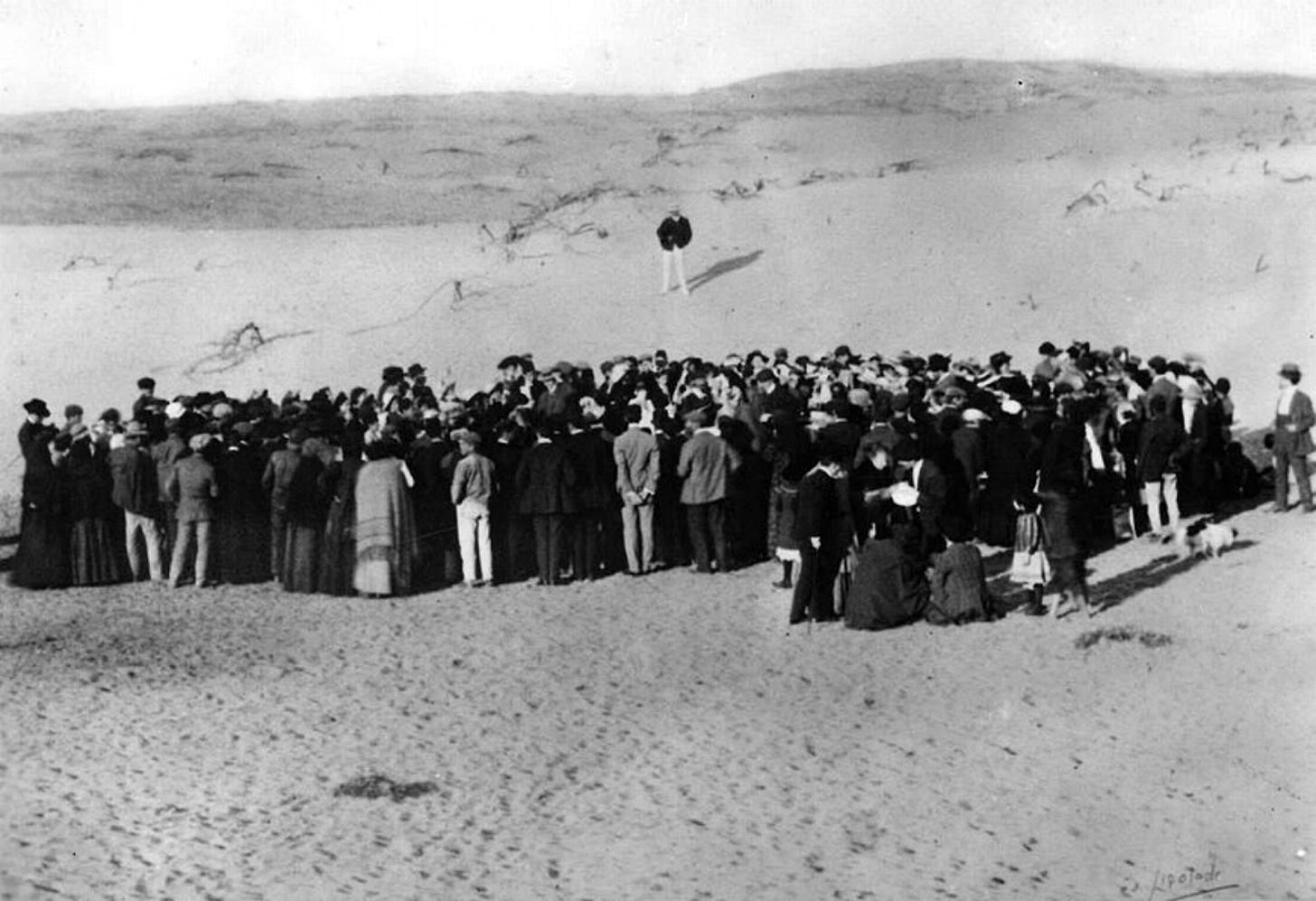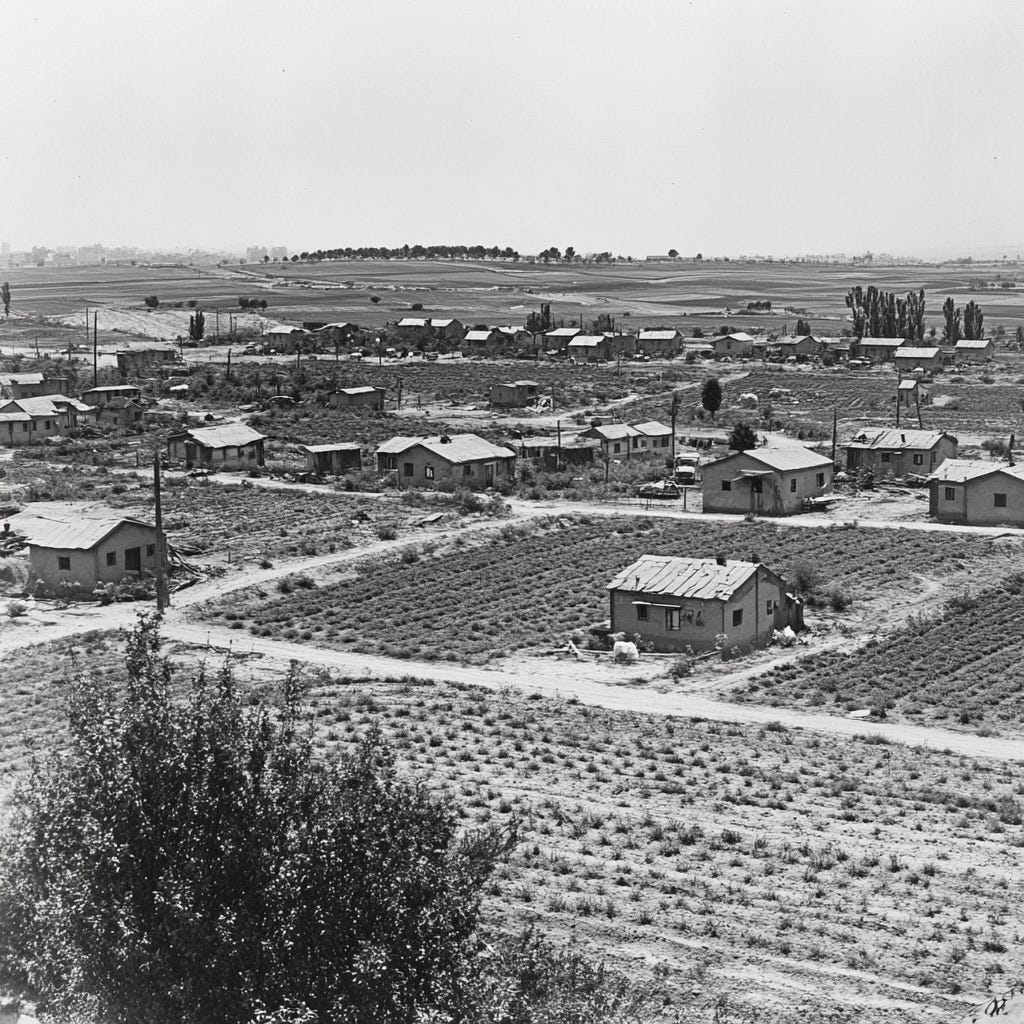Flashback.
Second Aliyah, 1904-1914 and Third Aliyah, 1918-1923
The second and third Aliyas (immigration waves) were central elements in paving the way for establishing Jewish communities and cultivating the Hebrew-speaking workforce in the Land of Israel. The pioneers, who were also refugees, aimed to establish an economy emphasizing the importance of Jews' physical work, especially in agriculture in Eretz Israel, as part of national and cultural renewal.
During the second aliyah, the Jewish population in the Land of Israel, also known as Eretz Israel, almost doubled. After a short pause due to the First World War, the third Aliyah wave began towards its end, and as a result, the Jewish population drastically increased throughout Eretz Israel. The Jewish refugees needed housing and working solutions; therefore, additional land was purchased to establish new settlements and develop a Hebrew-Jewish economy that could provide for the people living in the communities.
Learning From the Experience of Early Settlements and Beyond
The financial difficulties the Moshavot faced during the first Aliya led to the transfer of their management to the legal guardians of philanthropists like Baron Abraham Edmond Benjamin James de Rothschild, who saved them from bankruptcy. However, these challenges formed the structure for all forms of settlement that were established afterward. While most versions didn't survive, new settlements such as Moshavim and Kibbutzim learned valuable agriculture and financial lessons from the knowledge and experience of the Moshavot's farmers and even utilized the various services they provided.
Establishing a settlement and community required significant resources and collective effort. People needed to build the settlement, develop the surrounding economy, and nurture community life. Most importantly, at that time, it was crucial to establish a security infrastructure to protect the residents and safeguard the agricultural lands from malicious damage by Arab Palestinian peasants.
The Jewish refugees were fast learners, so they kept innovating various models of agricultural settlements based on lessons learned from the failures of other communities in the region. They also expanded the urban settlements around the big cities. They established new neighborhoods outside the territory of Jerusalem and Jaffa. Their biggest success then, and to this day, was the "Ahuzat Bayit" neighborhood, which later became known as Tel Aviv.
Design Is as Important as the Building
Ottoman architectural influences were dominant in Jaffa, and multi-story buildings with vaulted ceilings and courtyards characterized the new buildings in the Ahuzat Bayit neighborhood. The architecture in the new Jewish neighborhoods in Jerusalem blended Ottoman and European styles, incorporating elements like stone and wood. Haifa also developed tremendously during this period, with wealthy Jewish immigrants investing in its economic infrastructure. The cornerstone for the Technion was laid, and the city's architecture reflected a mix of Ottoman and European influences, with early examples of modern industrial structures appearing.

Finding the Ultimate Solutions for the Development of Jewish Settlements
The Jewish refugee immigrants' experiments in developing new settlement models bore fruit during the third Aliyah wave. Kibbutz and Moshav became the most effective and, as a result, popular initiatives for forming new agricultural settlements. The new settlement models provided security for the community members and supported the economic, social, and family needs of its members. Buildings in kibbutzim were simple and designed to accommodate communal living and agricultural activities, reflecting the values of equality and shared labor. The community members of the Moshavim lived in individual homes near their plots of land. The Moshavim architecture blended traditional rural styles with modern influences, focusing on functionality and adaptability to the local environment.
In the first decades of the 20th century, the JNF (Jewish National Fund) acquired an excessive amount of land, particularly in the Jezreel Valley, mainly because this area was full of swamps and the local Arab Palestinian peasants had no knowledge of utilizing solutions to drain the land and make it usable for agriculture. Seeing the Jewish immigrants, who became the landlords, succeed in draining the swamps and developing flourishing agriculture businesses was an unbelievable spectacle for the local peasants, which increased the hatred and resentment towards the Jews.
The British Arrive in The Middle East
The infrastructure of urban and agricultural development in the Land of Israel was primarily driven by the Jewish community, alongside wealthy Arab and Christian families living in the area. Both groups were more educated than the local Arab Palestinian peasants, with cultures that more closely resembled those of Europeans. However, when the British gained control over Palestine from the League of Nations, they accelerated the region's development. The British were given underdeveloped areas where the population's culture, morals, and values were, at best, from the 14th and 15th centuries.
In the governance structure inherited from the Ottoman Empire, the British and French received regions with undeveloped economies and uneducated populations. The ruling elite had oppressed the public and intentionally kept them isolated for hundreds of years to prevent any resistance. The people were barbaric, illiterate, uneducated, ignorant, and unskilled in the professions needed to develop the area and adapt it to the modern world.
On the infrastructure level, there were barely any roads, transportation systems, sewer systems, or institutions for the benefit of the public, like hospitals, libraries, or theaters. The vast majority of the Arab population never saw a school in their life or knew what basic education was. Most Arabs who lived under the Ottoman Empire's rule never saw a play in the theater or a movie in the cinema, nor did they even know what a theater and a cinema were. They had no formal education system or minimal health care system.
The geopolitical changes of the 19th century, massive corruption, and technological gaps pushed the Ottoman Empire to the brink of bankruptcy. The First World War further devastated the remains of its economy. The British were then tasked with restoring or rebuilding the region's economy for its residents.
Mandatory Palestine
When the British received the mandate over Palestine, most of the region was a wasteland. The British laid the foundation for the essential infrastructure required to develop the area in every aspect of life, from building roads, improving transportation, and building hospitals to providing education and labor for the local residents.
On the one hand, the British are still perceived as suppressor colonizers who didn't understand Middle Eastern Arab culture and traditions. On the other hand, their knowledge, strength, and remarkable leadership of their people, along with their ability to collaborate with the French Empire and the United States, led them to win the First World War and gain control over strategic regions of the Ottoman Empire. Losing a war is disappointing, so the resentment towards those who won is not surprising.
However, there is a recurring pattern in the behavior of Middle Eastern Arabs, one that has persisted since that time. They start wars and lose or join the losing side, and then they continue to whine about the outcome for years while nurturing aspirations of revenge. In their view, winning subsequent wars is necessary to regain their honor, but they have repeatedly lost to every Western nation they started a war with.
To this day, British rule in Mandatory Palestine has always been controversial, with benefits and drawbacks. However, thanks to the British Empire, the region made remarkable progress towards the modern industrialized world, which would not have been possible without them.
Please fasten your seatbelts and subscribe.
Unlock my potential to write the next great chapter in the most extraordinary story ever told. Your support on Substack or Patreon would make a big difference in taking this journey to the next level.
Follow me on My Journey to Infinity to find out. It will be more beautiful than you could ever imagine.
Liat










